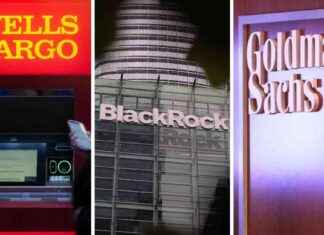Why Investors Should Hold Off on Gladstone Capital (NASDAQ: GLAD) Stock
Gladstone Capital (NASDAQ: GLAD) is a Business Development Company (BDC) that has seen significant benefits from the rising interest rates in recent times. With around 94% of GLAD’s investment portfolio consisting of floating rate investments, the BDC has experienced a rise in its net investment income (NII) amidst a high-interest rate environment. However, the current trend of increasing interest rates is expected to shift soon, with a potential decline in interest rates on the horizon. While this shift may have a negative impact on NII, the dividend seems secure for the time being. Despite this, the elevated valuation of the BDC suggests that investors should exercise caution and hold off on investing in GLAD at this time.
Portfolio and Risk Management Insights
Many BDCs offer detailed reporting on internal risk ratings for their portfolio investments, providing valuable insights into changes in portfolio risk over time. Gladstone Capital, however, takes a slightly different approach by reporting on the lowest and highest risk ratings assigned to investments, as well as the average and weighted average risk ratings of the overall portfolio. While this reporting method may not be as comprehensive as that of other BDCs, it still sheds light on potential increases in portfolio risk.
In its latest 10Q report, Gladstone Capital explains its risk management system, which includes a proprietary risk rating system used to estimate the probability of default on debt securities and the expected loss in case of default. The BDC’s risk rating system covers both qualitative and quantitative aspects of the business and securities held in the portfolio. The most recent earnings report showed an improvement in the weighted average risk rating of the portfolio, indicating a positive trend in managing portfolio risk despite the challenges posed by the high-rate environment.
Safety of the Dividend and Future Prospects
Recent concerns raised by analysts regarding GLAD’s ability to sustain its dividend coverage in the face of potential interest rate declines highlight the importance of monitoring rate developments closely. With a majority of its portfolio consisting of floating rate investments, a significant drop in interest rates could impact GLAD’s NII and potentially jeopardize the sustainability of its dividend in the future. While the dividend is currently well covered by NII, any unexpected rate cuts could pose a threat to its long-term viability.
The current premium to Net Asset Value (NAV) at which GLAD is trading suggests that the risk of interest rate cuts has not been fully factored into the BDC’s valuation. Compared to other BDCs like Ares Capital (ARCC), GLAD’s premium to NAV is relatively high, indicating a potential overvaluation given the current market conditions. Investors should be mindful of these factors when considering investing in GLAD and may want to hold off until a clearer picture emerges regarding future interest rate movements.
Conclusion
While Gladstone Capital has shown positive developments in managing portfolio risk and maintaining dividend coverage in the short term, the potential impact of declining interest rates on its NII raises concerns about the sustainability of its dividend in the long run. The BDC’s current valuation may not adequately reflect the risks associated with interest rate cuts, warranting caution from investors. As such, it may be prudent to hold off on investing in GLAD until there is more clarity on future interest rate trends and their impact on the BDC’s financial performance.
In conclusion, while Gladstone Capital has demonstrated resilience in navigating the challenges of a high-rate environment, investors should exercise caution and monitor developments closely before making any investment decisions. The BDC’s ability to adapt to changing market conditions and sustain its dividend in the face of potential rate cuts will be key factors to consider in the coming months.








